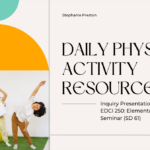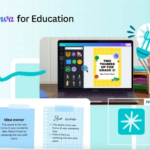The best way I could describe the film ‘Most Likely To Succeed’ (MLTS) would be to compare it to slowly slicing into an onion. At first it seemed like your typical well-done documentary; beautiful shots, great narration, a way to make it personal, and the likes. But as you watch more, you start to see how all the layers build on top of each other and the relationships between them. Not to mention that it may be a bit of a tear-jerker by the end of it (spoiler: the tears were for joy).
A Couple Key Takeaways
- It has never really clicked for me how the education system was designed to reflect jobs in an economy. I was very surprised to learn that school systems were created during the industrial revolution as a way to streamline factories. Streamlining was accomplished by producing workers with the same foundation of knowledge which they acquired through school facilities so that they were able to perform the same job in any factory across the US. We should no longer be implementing teaching methods and practices that value content over ‘soft skills’ such as critical thinking, confidence and the ability to collaborate. It’s not practical to be producing students as if they are on a production line. It just isn’t that simple for the current/future economy.
”(We are) going from an industrial economy to an informational economy. We are currently educating students for jobs that do not exist yet.”
Sal Amin Khan (founder of Khan Academy)
- Those who are successful in careers, today, are those who are resourceful, resilient and will continue to learn. The school that MLTS focuses on, High Tec High, supports students in building the ‘soft skills’ that they will need in order to be not only productive members of society but to live a more fulfilling life overall. This school receives less funding than other public schools, has teachers that get paid on the lower end of the pay scale, and who’s student population consists of 50% low income households. All this aside, the teachers get to teach what they want and how they want and feel immense value in their role when they experience the growth of a student. It does mean that the students maybe get about 40% of the content that is in the curriculum, however they hold onto the information much longer than students in the mainstream public school system, who typically forget almost all of the information after just 3 months.Additionally, this ‘new’ wave of schooling creates an engaging and safe space where mistakes are not only ok but encouraged by teachers. Students become more confident in their abilities to achieve their goals and learn valuable skills in the process. It may be too early to tell how it affects students once in college and generally life itself however with a post secondary acceptance rate of 98%, it does have a higher graduation rate than other public schools across the US.
Ultimately, there is so much in this film to take in, discuss and apply in classrooms that I genuinely recommend watching it yourself if you haven’t already.




